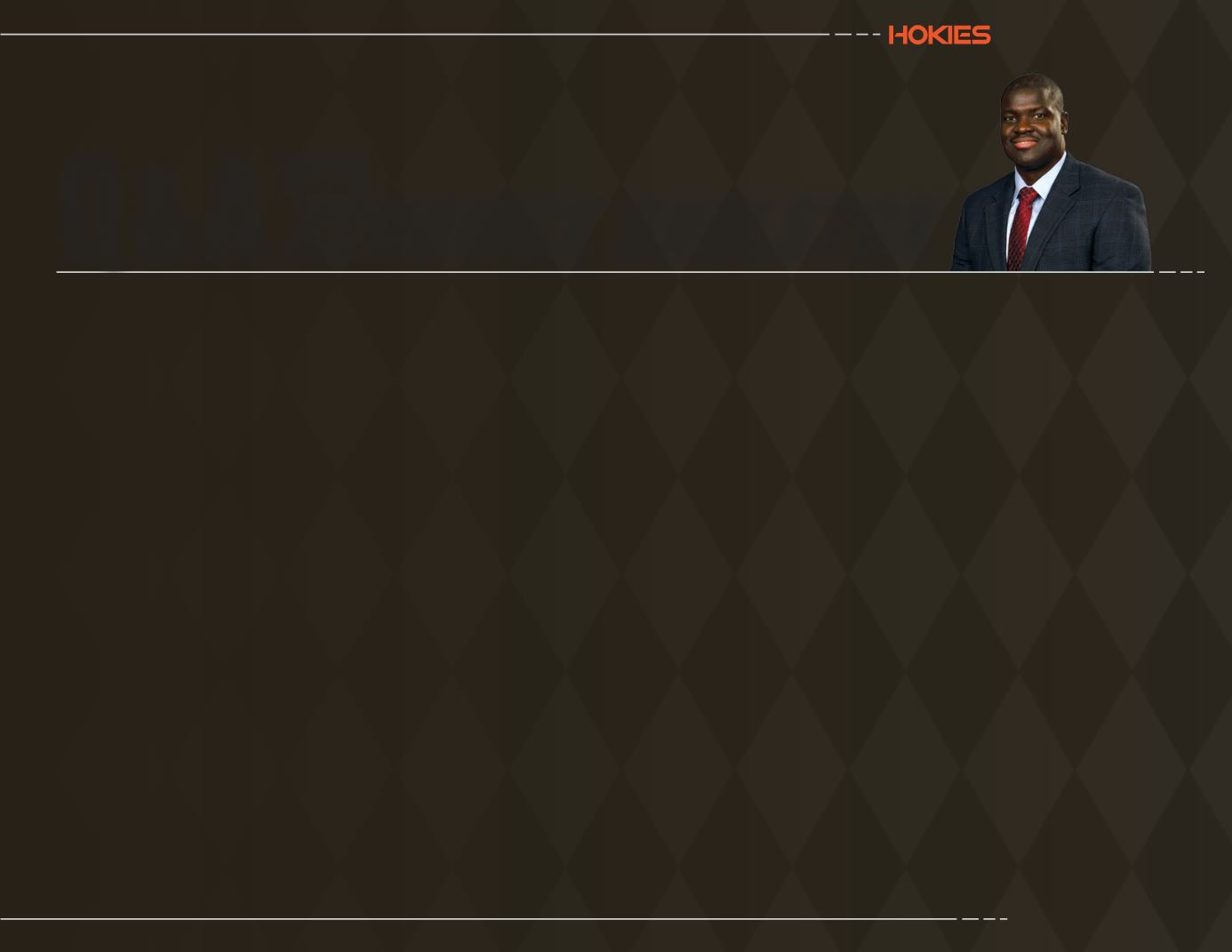

Q
&
A
WI TH
KENDRICK GHOLSTON
ASSOCIATE DIRECTOR FOR SAASS
Q:Walkus through your day-to-day responsibilities
with the men’s basketball program?
I handle all of the academics of the men’s basketball team,
such as progress towards their degree, NCAA eligibility,
career options and things to help them inside and outside
of the classroom while in school.
Q: What are some of the ways your help to guide
our student-athletes to graduation and the next
step in their careers?
We try to work with the Student-Development department
in a lot of the things we do. One of the things they’ve
devise recently is the Career Game Plan, a program
that builds on itself as the student-athletes progress.
From resume building workshops to different types of
development programs, career transitioning programs.
Each year builds on itself until we reach graduation, so
hopefully, by the time we reach the last few years, the
athletes have an idea of where they’re heading, be it grad
school or careers or internships. Everything I do, I try to
supplement that program.
Q: What aspects do you think are most challenging
when it comes to student-athletes maintaining
their focus on the court and in the classroom?
I think, being a former student-athlete myself, I was
blessed and fortunate to play on a professional level after
college. People outside of college athletics don’t really
understand the time you have to put in to be a student-
athlete. If the student-athletes have a good foundation
coming into college and know how to manage their time,
they’re going to be able to be successful. The very few
that don’t know that, that’s where we run into challenges.
With a sport like basketball, where you’re playing twice
a week and traveling at lease once a week, you’re out
of the classroom for most of the Spring. That’s why
Summer and Fall are so valuable, we try to balance and
maintain. We have to make sure we don’t fall behind their
timeframe and that’s what we’re trying to teach them:
how to manage their time, take advantage of their tutoring
and be proactive.
Q: Arriving to school a summer or semester early
has become a large trend in collegiate athletics.
What kind of advantage do you think this provides
student-athletes?
I think it helps them get acclimated but I don’t know how
big the advantage is because it really all comes down to
having the right attitude. It does give them the advantage
of not having games and getting them acclimated to what
their schedule will look like in the fall semester without
the added pressures. They’re not shell-shocked in the
fall, they know the people around them and what their
expectations are.
Q: How do you go about instilling the successful
mindset you mentioned earlier?
I’m all about establishing identity and discipline. If you
understand who you truly are and what you’re truly here
for, it’s a lot easier to accomplish any task. I think that
applies to any field and any work environment, wherever
you are. Knowing who you are makes you stronger in your
job, stronger in your sport and the classroom. What we
want them to understand is that, like they’ve been trained
to get up when they fall, that they need to apply that to
all aspects of their lives. One bad test doesn’t define
you and, if they can understand that, it makes them more
successful and hirable when they hang sports up.
Q: What drew you back to working in collegiate
athletics when your playing days were through?
You see a lot of student-athletes go on to be successful
in their careers, instead of or after playing professionally,
but then you also see the other side, the ones who can’t
find their identity after it’s over. When I retired, I did a
lot of volunteering in schools and realized that I wanted
to give back and show others what I learned. College
sports is such a fertile ground for leadership if they can
understand how to use what makes them special. These
kids have dealt with adversity on the court, learned to
adjust on the move and have a set of skills that it’s hard
to teach. I wanted to help those kids find their best paths.
1 6 - 1 7 M E D I A G U I D E
#getB3 TTER #ThisIsHome
87
















